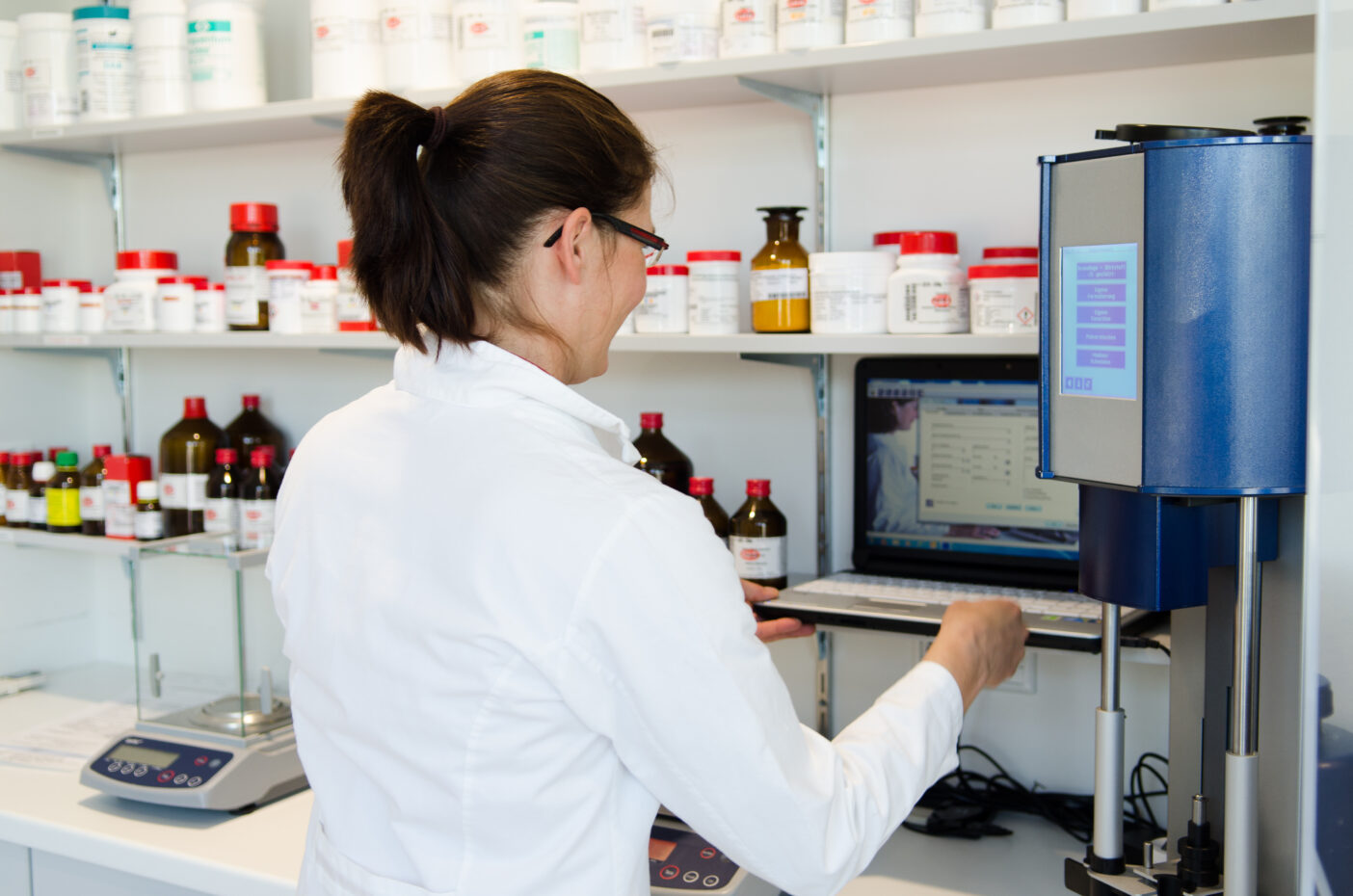The structure of a cosmetic formulation: composition and function

The formulation is at the heart of every skincare product, be it a cream, serum or shower gel. It is crucial for the texture, efficacy, stability, skin compatibility and market potential of the product. But how is a cosmetic formulation structured and what is important when formulating?
What is a cosmetic formulation?
A cosmetic formulation describes the exact composition of a product, including all ingredients and their concentrations. It is more than just a list of ingredients, as it also takes into account the physical and chemical properties, stability and compatibility of the raw materials, as well as the regulatory requirements of the EU Cosmetics Regulation.
Basic structure of a cosmetic formulation
A classic cosmetic formulation usually consists of the following phases:
1. Water phase (hydrophilic): This contains water, hydrolates, soluble active ingredients or humectants such as glycerine.
2. Oil phase (lipophilic): This includes vegetable oils, esters, waxes and lipid components.
3. Emulsifiers: These combine the oil and water phases to form a stable emulsion.
4. Active ingredients: These depend on the function of the formulation, e.g. anti-ageing, moisturising or soothing.
5. Preservatives: These are important for microbial stability, especially in water-based products.
6. pH regulators and stabilisers: These ensure skin compatibility and shelf life.
The cosmetic formulation can vary greatly depending on the product type: for example, a lip balm does not require a water phase, and a serum often does not require an oil phase.
Why is the cosmetic formulation so important?
The quality of a cosmetic product stands and falls with its formulation. Even the best raw materials are useless if they are not combined and processed correctly. A balanced cosmetic formulation ensures:
- Stability (physical, microbial, chemical)
- Sensory properties (application behaviour, skin feel).
- Effectiveness (bioavailability of ingredients).
- Safety (avoidance of incompatibilities or skin reactions).
Challenges in formulation
Developing a functional cosmetic formulation requires in-depth knowledge of chemistry, toxicology and skin physiology. Some of the challenges include:
– Raw material compatibility: Not all active ingredients can be combined with each other.
– Stability tests: Temperature, light and microorganisms can destabilise the formulation.
– Sensory properties: The ideal cosmetic formulation must feel pleasant on the skin, i.e. neither too greasy nor too sticky.
Clean beauty and natural cosmetics
The development of a cosmetic formulation is particularly complex in the field of natural cosmetics, where many classic preservatives and synthetic emulsifiers are not permitted. The challenge is to develop a stable and sensorially appealing formulation with ingredients that are as natural as possible.
Tips for a successful cosmetic formulation:
1. Think from the target group’s perspective: What does the end consumer expect? Light textures? Intensive care?
2. Test prototypes: Several variants of a cosmetic formulation should be evaluated in practical trials.
3. Pay attention to scalability: A good laboratory formulation must also remain stable on a large scale.
Cosmacon is happy to provide all these services for you.
Pre-developed cosmetic formulation
We receive many enquiries from interested parties who send us their ‘pre-developed cosmetic formulation’ in order to save on supposed development costs. These formulations often only contain an INCI name and a gram quantity.
However, this is not a formulation!
A formulation always consists of a trade name for a raw material and a percentage indication for the respective raw material. When added together, all specifications always add up to 100%.
The following raw material documentation should also be available for each raw material:
– Safety data sheet
– Specification
– INCI composition
– Vegan statement
– For perfumes and essential oils, an IFRA statement from the latest edition and an allergen list are also required.
Only with this information can a formula be produced in the laboratory or on a large scale in accordance with GMP.
The raw material supplier does not send me any documents.
If you purchase raw materials for recipe development and your raw material supplier does not send you the necessary documents, then they are not your supplier.
Every raw material supplier must keep these documents on file and provide them free of charge.
If they do not, you should no longer purchase from them!
We can assess the quality based on the trade name and the documents sent to us. Only the trade name indicates the quality of a raw material, and only high-quality raw materials can be used to manufacture a high-quality cosmetic product. Cosmetic products should be skin-friendly and marketable.
Conclusion
The formula is the key to the success of a cosmetic product. Those who master it can not only develop effective and safe products, but also differentiate themselves in a highly competitive market. Whether classic, clean or innovative – the perfect cosmetic formula is always a successful combination of science, creativity and experience. Only such a formula represents real value and makes your brand or company successful.
Please feel free to contact us if you would like to know more about cosmetic formulations.